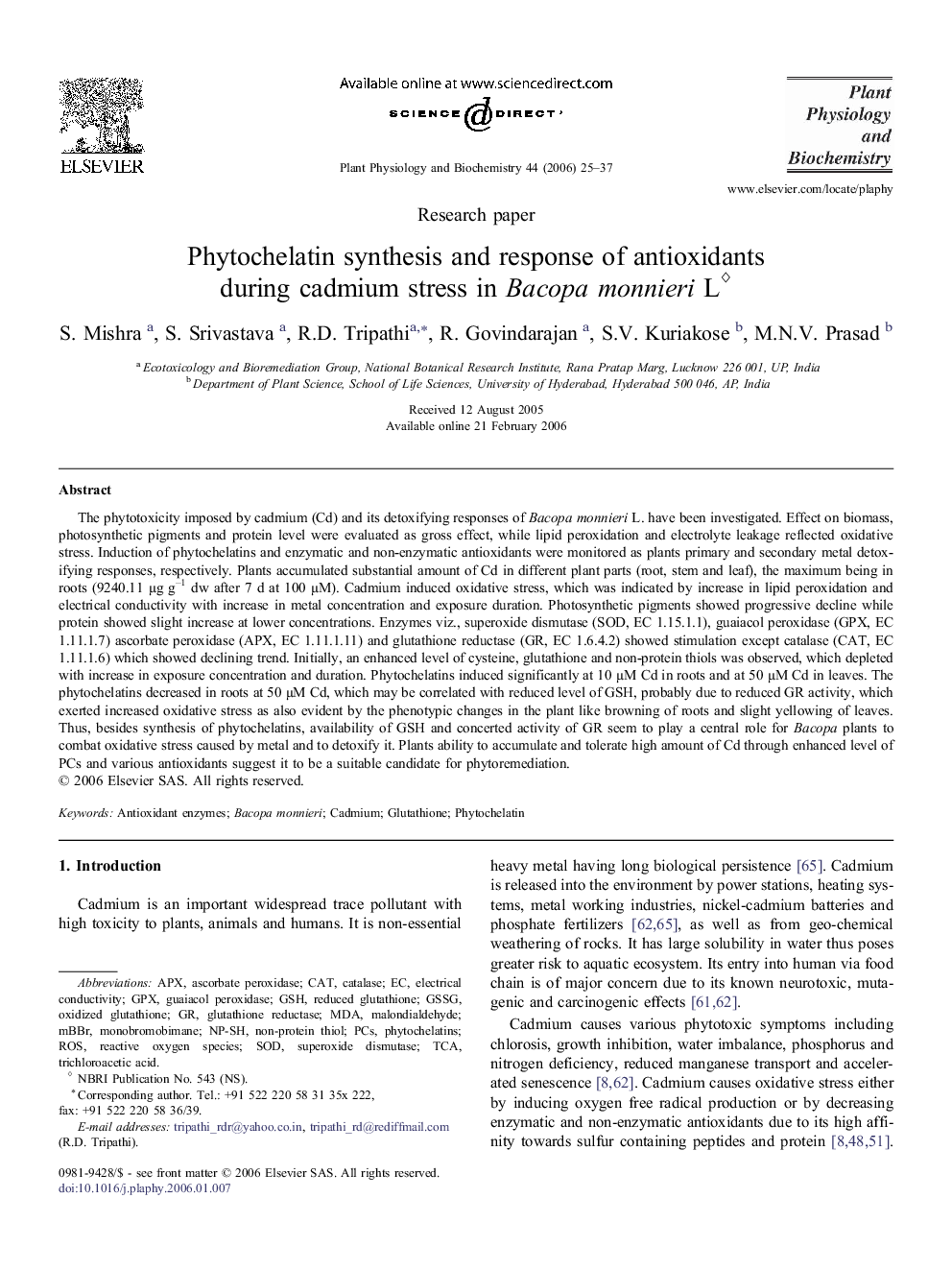| Article ID | Journal | Published Year | Pages | File Type |
|---|---|---|---|---|
| 2015876 | Plant Physiology and Biochemistry | 2006 | 13 Pages |
The phytotoxicity imposed by cadmium (Cd) and its detoxifying responses of Bacopa monnieri L. have been investigated. Effect on biomass, photosynthetic pigments and protein level were evaluated as gross effect, while lipid peroxidation and electrolyte leakage reflected oxidative stress. Induction of phytochelatins and enzymatic and non-enzymatic antioxidants were monitored as plants primary and secondary metal detoxifying responses, respectively. Plants accumulated substantial amount of Cd in different plant parts (root, stem and leaf), the maximum being in roots (9240.11 μg g–1 dw after 7 d at 100 μM). Cadmium induced oxidative stress, which was indicated by increase in lipid peroxidation and electrical conductivity with increase in metal concentration and exposure duration. Photosynthetic pigments showed progressive decline while protein showed slight increase at lower concentrations. Enzymes viz., superoxide dismutase (SOD, EC 1.15.1.1), guaiacol peroxidase (GPX, EC 1.11.1.7) ascorbate peroxidase (APX, EC 1.11.1.11) and glutathione reductase (GR, EC 1.6.4.2) showed stimulation except catalase (CAT, EC 1.11.1.6) which showed declining trend. Initially, an enhanced level of cysteine, glutathione and non-protein thiols was observed, which depleted with increase in exposure concentration and duration. Phytochelatins induced significantly at 10 μM Cd in roots and at 50 μM Cd in leaves. The phytochelatins decreased in roots at 50 μM Cd, which may be correlated with reduced level of GSH, probably due to reduced GR activity, which exerted increased oxidative stress as also evident by the phenotypic changes in the plant like browning of roots and slight yellowing of leaves. Thus, besides synthesis of phytochelatins, availability of GSH and concerted activity of GR seem to play a central role for Bacopa plants to combat oxidative stress caused by metal and to detoxify it. Plants ability to accumulate and tolerate high amount of Cd through enhanced level of PCs and various antioxidants suggest it to be a suitable candidate for phytoremediation.
